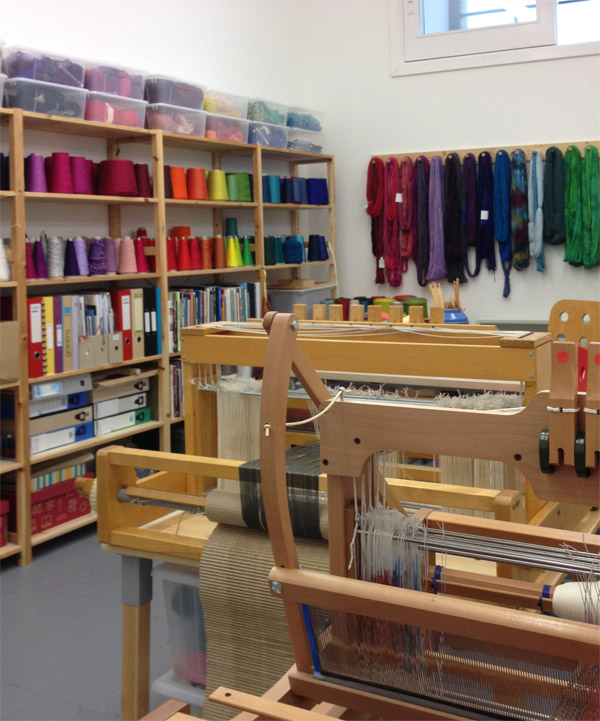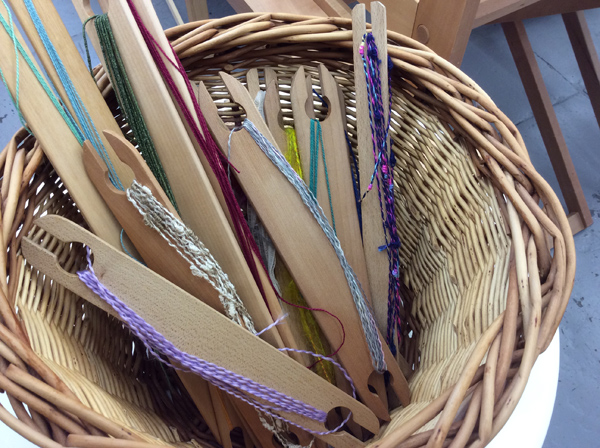In the last few years there has been a growing interest in ‘open studios’ events or ‘art trail.’ Although these events come in many forms, the common theme is that individual artists in a locality join together to open up their studios to the public.
It is often an annual event, taking place over a week or a weekend, and it can become a highlight of the year for both the artists and their visitors – or it can be a stressful disappointment!
So, to help you make the most of open studios, here are five questions to ask yourself.

1. What are my goals?
It may seem obvious, but in fact there are many possible reasons for taking part in Open Studios, and before you start it is important to take time to think about yours.
Do you want to…
…sell your work?
…recruit people to classes that you offer?
…network with other artists in your area?
…get commissions for bespoke pieces?
…show your friends and neighbours what you do all day?
…let the world know that you are there?
Your reasons may be many (or none) of those above – that’s fine. But by knowing what you would like to achieve, you can make sure that you prepare appropriately.
2. What shall I display?
You will certainly want to show what it is you make, but – before getting all of your life’s work out of the cupboards – think about how to tailor your display to your goals.
For example, if you want to sell your work, then what is your newest or best collection? Choose one or two areas of work which highlight your skills and interests and make these your focus. Other pieces can play a supporting role and offer different price points. A ‘sale bin’ of a discontinued line of work may appeal to some visitors as well as helping you to free up storage space! I asked a few fellow artists and weavers for their top tips, and Ashleigh of Warpweftweave Studio recommends planning well ahead to make sure you have enough stock for any event when you are going to be selling.
Alternatively, if you want to recruit students for your workshops, then display examples of the things they might make. Previous students may be willing to loan you their work for this purpose. If you have taken photos of classes in progress, then some large prints of these on the walls – or perhaps a slide show on a laptop – will also demonstrate what you are offering.
Regardless of the main themes of your display you will also need
- business cards
- flyers for any forthcoming events (classes, exhibitions, craft fairs)
- somewhere for people to sign up for future news of your work
I personally have a dislike of sign-up sheets – I don’t want to write down my private email address where everyone can see it – so I offer slips of paper and a box to post them into.
And if you are planning to make sales or take bookings, then make sure you indicate clearly what means of payment you can accept and keep a cash float for small purchases.
3. How do I make my studio attractive and accessible?
You absolutely do not need a picture-perfect studio. If you have a room that is filled with yarn and loom, visitors will love it. However, there are some simple things you can do to make the most of your space. For example, Desirée Lagerberg of Hemvävt recommends adding some extra lighting to help show your work at its best.
Remember, too, that an Open Studio is not just about finished pieces. At its heart it is about the work you do in your space: the process of designing and making, which is life and breath to you but often a complete mystery to others. As a weaver, you have a great big asset in your studio: your loom. The loom is a magnet for the curious visitor, who will want to see how it is that you do what you do.
So plan ahead to have something on your loom that is attractive to look at but easy to weave – easy enough that you can weave and talk at the same time! You may also want to show other aspects of your process, such as winding a warp, or you might get out one or two sketchbooks to show how you turn an idea into cloth. If you have more than one loom, how about setting one up so that visitors can have a go themselves?

Stick shuttles wound with short lengths of yarn, ready for visitors to use
You will want to strike a balance between making your studio safe for visitors – no lease sticks poking out where they are going to trip people up – and keeping it a lively working space. Don’t tidy up so energetically that it becomes a showroom rather than a studio! But before you open the door, do make sure that you have public liability insurance and comply with any requirements your insurer specifies.
4. How will I take a break?
Whether you will be opening your studio for a day or for a month, you can’t be on duty all the time without a break. Artist K Rolina suggests recruiting some friends and arranging a rota. If you are a little shy about selling your own work, this can also be a great way to take the pressure off – and if you have a friend who is an effective salesperson then use the opportunity to watch and learn!
You can take this strategy further by inviting some other makers to exhibit their work with yours. By putting on a small group show you may increase the appeal of your venue to visitors, especially if you are some way off the beaten track.

A corner of a group show in one artist’s studio
If you plan to manage mainly on your own, however, then take a tip from Marlene Toerien and keep tissues, water and breath mints handy so you can freshen up between visitors!
5. How will I evaluate my experience?
Once the visitors have left and your studio door is closed once more, it is time to take stock. Think in advance about how you will evaluate the experience. For instance, it may be useful to keep a pencil and notebook handy so that you can keep a tally of visitor numbers.
Whatever your goal(s), be honest in your self-assessment. If you set yourself a particular target for sales, did you meet it? If you exceeded it, then what were the items that did especially well? If you made fewer sales than you had anticipated, make a note of which items did sell and which did not. Were people interested in them but not quite ready to buy?
You may find that you did not meet your primary goal, but had a great time and picked up some really interesting opportunities along the way. The next time around, you might decide to shift your goals to match your experience or you could ask for some feedback to help you achieve those original aims. It’s your studio, so it’s your choice!


Share tips, start a discussion or ask one of our experts or other students a question.
No Responses to “5 Questions to Ask Before Hosting a Weaving Studio Opening”